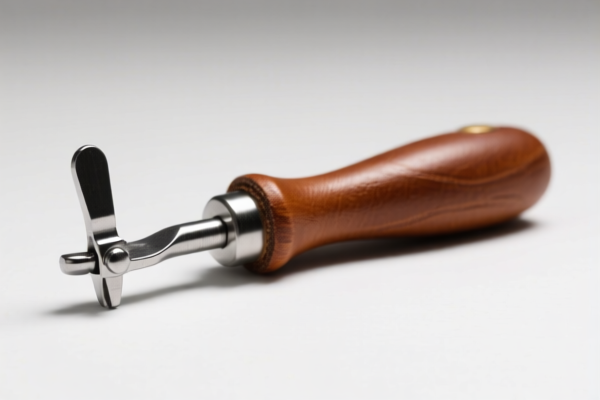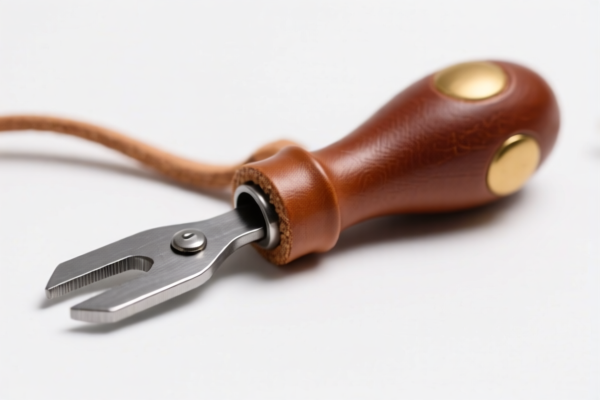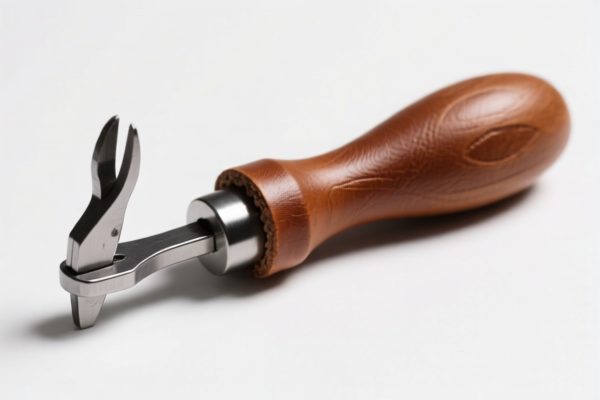| HS Code | Official Doc | Tariff Rate | Origin | Destination | Effective Date |
|---|---|---|---|---|---|
| 8487900080 | Doc | 83.9% | CN | US | 2025-05-12 |
| 8487900040 | Doc | 58.9% | CN | US | 2025-05-12 |
| 4115100000 | Doc | 55.0% | CN | US | 2025-05-12 |
| 4115200000 | Doc | 37.5% | CN | US | 2025-05-12 |
| 4107998000 | Doc | 32.4% | CN | US | 2025-05-12 |
| 4114203000 | Doc | 57.3% | CN | US | 2025-05-12 |
| 8206000000 | Doc | The rate of duty applicable to that article in the set subject t+30.0% | CN | US | 2025-05-12 |
| 8203206060 | Doc | 12¢/doz. + 5.5%+55.0% | CN | US | 2025-05-12 |




Leather Installation Tools
Leather installation tools encompass a variety of implements used in the shaping, cutting, joining, and finishing of leather goods. These tools are essential for both professional leatherworkers and hobbyists. The specific tools employed depend on the complexity of the project and the desired aesthetic.
Materials Commonly Worked With:
- Vegetable-tanned leather: Most commonly used with these tools due to its ability to be molded, tooled, and shaped.
- Chrome-tanned leather: Can be worked with some tools, but often requires specialized adhesives and techniques as it doesn’t hold impressions as well.
- Other leathers: Pigskin, goat skin, and other types may require adaptations in tool selection and technique.
Purpose & Function:
The overarching purpose is to transform raw leather into durable, functional, and aesthetically pleasing items. This is achieved through:
- Cutting: Precisely separating leather into desired shapes.
- Shaping: Molding and forming leather for specific designs.
- Joining: Permanently connecting leather pieces.
- Decorating: Adding patterns, textures, and embellishments.
- Finishing: Protecting and enhancing the leather’s appearance and durability.
Common Types of Tools:
- Cutting Tools:
- Leather Shears/Knives: For general cutting. Different blade shapes are available for various cuts.
- Rotary Cutters: Provide clean, curved cuts, particularly useful for larger projects.
- Round Knives: Used for detailed cutting and creating smooth curves.
- Utility Knives/Box Cutters: For straight cuts and trimming.
- Shaping & Molding Tools:
- Modeling Spoons/Burnishers: Used to shape leather edges and smooth surfaces.
- Edge Bevelers: Create angled edges for a refined appearance.
- Creasers: Create lines and grooves for folding or decorative purposes.
- Stamps: Imprint designs and patterns into the leather. (Various types including beveling, background, and decorative stamps)
- Mallets/Mauls: Used with stamps and other tooling implements to provide force.
- Joining Tools:
- Pricking Irons/Stitching Chisels: Create evenly spaced holes for hand stitching. Different prong counts are available.
- Awls: Enlarge holes and guide the needle during stitching.
- Needles & Thread: Various needle types and thread weights are available depending on the leather thickness and desired stitch strength.
- Rivets & Setters: Provide a permanent mechanical connection.
- Leather Glue/Adhesive: Used to temporarily or permanently bond leather pieces.
- Finishing Tools:
- Edge Slickers: Smooth and polish leather edges.
- Burnishers: Used with various compounds to create a polished finish.
- Wool Daubers/Applicators: Apply dyes, finishes, and conditioners.
- Sanding Blocks/Paper: Used to smooth surfaces.
Usage Scenarios:
- Hand Stitching: Creating wallets, belts, bags, and other items using traditional techniques.
- Tooling & Carving: Adding intricate designs to leather surfaces.
- Bag Making: Constructing leather bags and purses.
- Shoe Repair & Construction: Repairing or creating leather footwear.
- Saddle Making: A highly specialized field requiring a wide range of tooling and shaping implements.
- Holster/Sheath Making: Crafting leather protective cases for knives, firearms, etc.
- Upholstery: Working with leather for furniture and automotive applications.
The declared goods are leather installation tools, which are tools used for the installation of leather products. These tools may include pliers, pincers, tweezers, and similar hand tools used in the process of fixing or assembling leather components.
The following HS codes from the provided reference material may be relevant:
- 8203206060: Files, rasps, pliers (including cutting pliers), pincers, tweezers and similar tools, and parts thereof: Other: Other (except parts) Other. This code covers a broad range of hand tools, including pliers, pincers, and tweezers, which are commonly used for leather installation. The applicable tax rate is 12¢/doz. + 5.5% + 55.0%.
- 8206000000: Tools of two or more of headings 8202 to 8205, put up in sets for retail sale. If the leather installation tool is sold as a set containing multiple tools (e.g., pliers, tweezers, and other tools), this code may apply. The applicable tax rate is The rate of duty applicable to that article in the set subject t+30.0%.
- 8203206060: Files, rasps, pliers (including cutting pliers), pincers, tweezers and similar tools, and parts thereof: Other: Other (except parts) Other. This code covers a broad range of hand tools, including pliers, pincers, and tweezers, which are commonly used for leather installation. The applicable tax rate is 12¢/doz. + 5.5% + 55.0%.
Regarding HS code 8203206060, please note that the tax rate is calculated based on a combination of a fixed amount per dozen (12¢/doz.) and a percentage of the assessed value (5.5% + 55.0%).
Customer Reviews
No reviews yet.